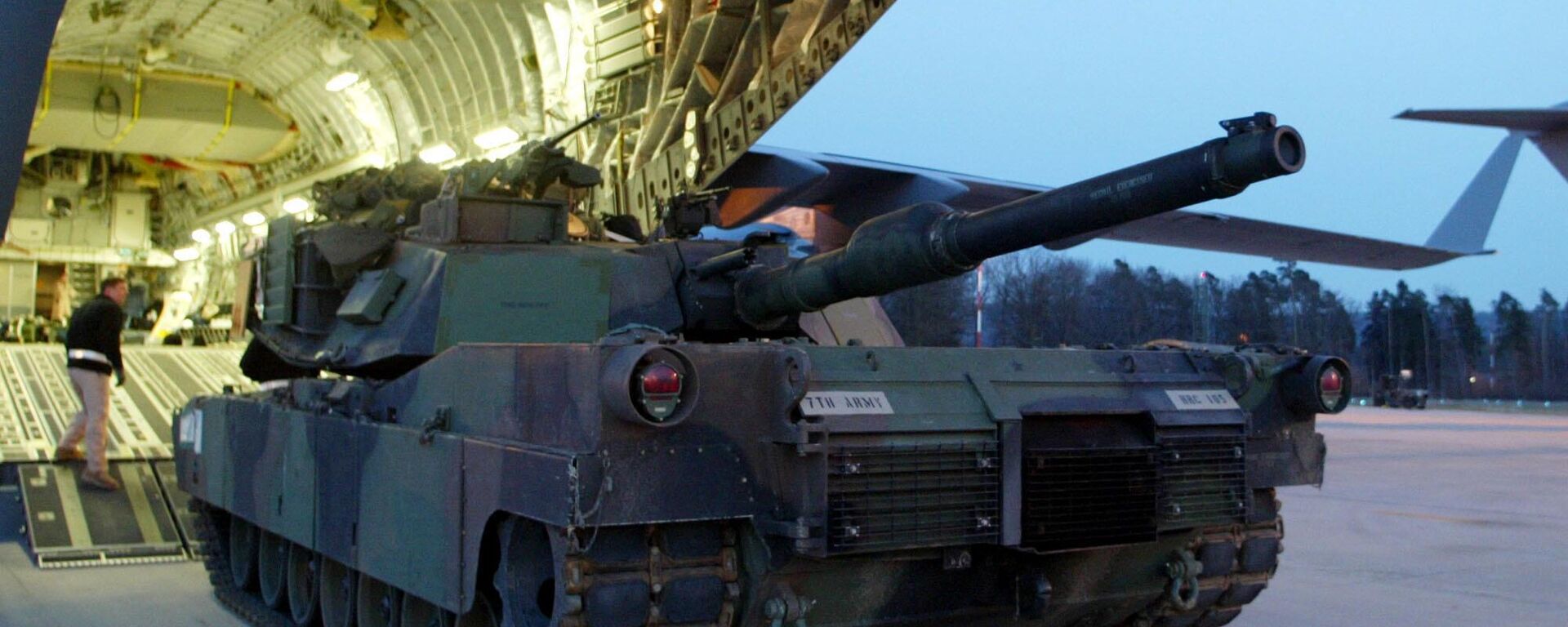https://sputnikglobe.com/20240430/how-biden-showed-the-world-the-us--nato-are-paper-tigers-1118198425.html
How Biden Showed the World the US & NATO Are Paper Tigers
How Biden Showed the World the US & NATO Are Paper Tigers
Sputnik International
After several failures by NATO and the US military, the former "leaders of the free world" appear to be nothing more than paper tigers.
2024-04-30T21:51+0000
2024-04-30T21:51+0000
2024-04-30T21:51+0000
analysis
michael maloof
ansar allah
israel
ukraine
russia
joe biden
sputnik
nato
mark sleboda
https://cdn1.img.sputnikglobe.com/img/07e8/04/1e/1118198263_0:0:1451:816_1920x0_80_0_0_baaeb67712434ffe7d7a0fdcc8a88f27.png
US President Joe Biden revealed to the world that the US military is no longer the giant that woke up on December 7, 1941, but a paper tiger unable to exert the power it once held. Both former Chinese leader Mao Zedong and Al-Qaeda leader Osama Bin Laden described the United States in this way. Though it may have taken several decades, they are finally being proven correct.The United States showed in the 1990s and through the start of this century that it was capable of dominating the battlefield when facing opponents with significantly less sophisticated equipment.But, as American hegemony has slipped, other countries have caught up and in some aspects surpassed the so-called world’s only remaining superpower.This is evident in the United States’ inability to halt the Yemen Ansar Allah (Houthi) movement's blockade against ships traveling to Israeli ports and the United States’ failure to prevent Iran’s attack on Israeli military targets.With the Houthis, the United States has resorted to attempting to bribe the group into stopping their attacks, a tactic that has failed. But the attack by Iran was worse for the perception of American-dominance, because the failure of its weapons were on full display.While most if not all of the drones sent by Iran were taken out by a combination of Israeli and US air defense systems, the drones were intended to distract and exhaust the defenses and allow Iran’s hypersonic missiles to hit their targets, which most reports say they did.The attack from Iran showed the world “that US defense capabilities” are “not there,” retired senior security policy analyst Michael Maloof told Sputnik’s The Critical Hour on Monday.In Ukraine, the situation would be comical were it not so dark. As the Kiev regime hyped what became its failed counteroffensive last year, a succession of NATO equipment was touted as the game changer that would send the Russians into retreat.First, it was the Bradley Fighting Vehicles, then Leopard tanks, then Challenger tanks, then a growing list of air defense systems and long-range artillery. Russia systematically destroyed them all, proving that NATO weapons are not the pinnacle of modern warfare and in many cases are relics of 20th-century warfare that will act as a gilded millstone around the neck of any army that relies on them in the 21st century.There was another tank the US provided to Ukraine last summer, but it was not seen on the battlefield until very recently: the Abrams M1 tank. It too was touted as a game changer, but despite Ukraine’s desperate need for armor, they were not used until the battle for Avdeyevka in February of this year.In September, Sputnik wrote an article highlighting the weaknesses of the Abrams tank, which was responded to by Popular Mechanics. The outlet asserted the Abrams would represent a “huge leap in the capabilities” of Ukrainian armor formations and accused Sputnik of exaggerating “not only the threat to Abrams tanks, but the tank’s vulnerabilities.”The article concluded that Russian forces “will have to work very hard to kill an Abrams tank.” But when it finally arrived, five tanks were quickly destroyed and at least one tank was captured. Last week, US military officials confirmed to US media that Ukraine had removed the Abrams tanks from the front lines, saying that they are too easily destroyed by Russian drones.The Abrams tank costs roughly $10 million a piece.The shattering of NATO’s veneer of invincibility will have geopolitical implications, Maloof argued. “Are we going to … convince the Saudis now that we’re going to defend them, when they saw with their own eyes that whatever layering we performed for the Israelis didn’t work. Are they going to buy into that? No, they’re going to start going their own way, increasingly more so.”On Tuesday, Iranian Economy Minister Ehsan Khandouzi described his talks with the Minister of Economy and Planning of Saudi Arabia, Faisal F. Alibrahim as “productive.”“The days of US dominance [are] over, and we're seeing this now as some 40 countries want to join BRICS and get out from under the dollar,” Maloof explained. “So, all of this is interrelated. It's all playing [out] in real-time, before our very eyes, and it's happening very rapidly.”
https://sputnikglobe.com/20240430/houthis-launch-missile-and-drone-rampage-targeting-four-ships-after-rejecting-us-bribe-attempt-1118196502.html
https://sputnikglobe.com/20230926/abrams-achilles-heel-how-russia-will-deal-with-american-tanks-in-ukraine-1113688746.html
https://sputnikglobe.com/20240429/watch-russian-forces-evacuate-first-us-made-m1-abrams-tank-from-front-line-1118173081.html
israel
ukraine
russia
Sputnik International
feedback@sputniknews.com
+74956456601
MIA „Rossiya Segodnya“
2024
News
en_EN
Sputnik International
feedback@sputniknews.com
+74956456601
MIA „Rossiya Segodnya“
Sputnik International
feedback@sputniknews.com
+74956456601
MIA „Rossiya Segodnya“
us hegemony ending, are nato weapons superior, who has the strongest military in the world, 21st century warfare tactics
us hegemony ending, are nato weapons superior, who has the strongest military in the world, 21st century warfare tactics
How Biden Showed the World the US & NATO Are Paper Tigers
On April 13, Iran responded to an Israeli attack on its embassy in Syria by striking Israel with more than 300 drones and missiles. While most were shot down by Israeli and US air defenses, hypersonic missiles fired by Iran hit their targets, showcasing the limits of Western defenses.
US President Joe Biden revealed to the world that the US military is no longer the giant that woke up on December 7, 1941, but a paper tiger unable to exert the power it once held. Both former Chinese leader Mao Zedong and Al-Qaeda leader Osama Bin Laden described the United States in this way. Though it may have taken several decades, they are finally being proven correct.
The United States showed in the 1990s and through the start of this century that it was capable of dominating the battlefield when facing opponents with significantly less sophisticated equipment.
But, as American hegemony has slipped, other countries have caught up and in some aspects surpassed the so-called world’s only remaining superpower.
This is evident in the United States’ inability to halt the Yemen Ansar Allah (Houthi) movement's blockade against ships traveling to Israeli ports and the United States’ failure to prevent Iran’s attack on Israeli military targets.
With the Houthis, the United States has resorted to attempting to bribe the group into stopping their attacks, a tactic that has failed. But the attack by Iran was worse for the perception of American-dominance, because the failure of its weapons were on full display.
While most if not all of the drones sent by Iran were taken out by a combination of Israeli and US air defense systems, the drones were intended to distract and exhaust the defenses and allow Iran’s hypersonic missiles to hit their targets, which most reports say they did.
The attack from Iran showed the world
“that US defense capabilities” are
“not there,” retired senior security policy analyst Michael Maloof told Sputnik’s
The Critical Hour on Monday.
“The ability to have a strong missile defense is not there, and the Russians [also] have these hypersonic capabilities,” Maloof explained. “[Iran] did hit their targets, and they did it with hypersonics and there was no defense.”
In Ukraine, the situation would be comical were it not so dark. As the Kiev regime hyped what became its failed counteroffensive last year, a succession of NATO equipment was touted as the game changer that would send the Russians into retreat.
First, it was the Bradley Fighting Vehicles, then Leopard tanks, then Challenger tanks, then a growing list of air defense systems and long-range artillery. Russia systematically destroyed them all, proving that NATO weapons are not the pinnacle of modern warfare and in many cases are relics of 20th-century warfare that will act as a gilded millstone around the neck of any army that relies on them in the 21st century.
There was another tank the US provided to Ukraine last summer, but it was not seen on the battlefield until very recently: the Abrams M1 tank. It too was touted as a game changer, but despite Ukraine’s desperate need for armor, they were not used until the battle for Avdeyevka in February of this year.

26 September 2023, 13:55 GMT
In September, Sputnik wrote an article highlighting the weaknesses of the Abrams tank, which was responded to by Popular Mechanics. The outlet asserted the Abrams would represent a “huge leap in the capabilities” of Ukrainian armor formations and accused Sputnik of exaggerating “not only the threat to Abrams tanks, but the tank’s vulnerabilities.”
The article concluded that Russian forces “will have to work very hard to kill an Abrams tank.” But when it finally arrived, five tanks were quickly destroyed and at least one tank was captured. Last week, US military officials confirmed to US media that Ukraine had removed the Abrams tanks from the front lines, saying that they are too easily destroyed by Russian drones.
“We saw, as with pretty much every type of tank we’ve seen in this combat that relatively cheap, $500, $1,000 a pop, Kamikaze drones can seriously damage a tank fairly easily,” security and international relations expert Mark Sleboda told Sputnik’s Fault Lines on Monday.
The Abrams tank costs roughly $10 million a piece.
The shattering of NATO’s veneer of invincibility will have geopolitical implications, Maloof argued. “Are we going to … convince the Saudis now that we’re going to defend them, when they saw with their own eyes that whatever layering we performed for the Israelis didn’t work. Are they going to buy into that? No, they’re going to start going their own way, increasingly more so.”
On Tuesday, Iranian Economy Minister Ehsan Khandouzi described his talks with the Minister of Economy and Planning of Saudi Arabia, Faisal F. Alibrahim as “productive.”
“Faisal F. Alibrahim agreed with all [of] Iran’s [economic] proposals,” Khandouzi noted.
“The days of US dominance [are] over, and we're seeing this now as some 40 countries want to join BRICS and get out from under the dollar,” Maloof explained. “So, all of this is interrelated. It's all playing [out] in real-time, before our very eyes, and it's happening very rapidly.”





